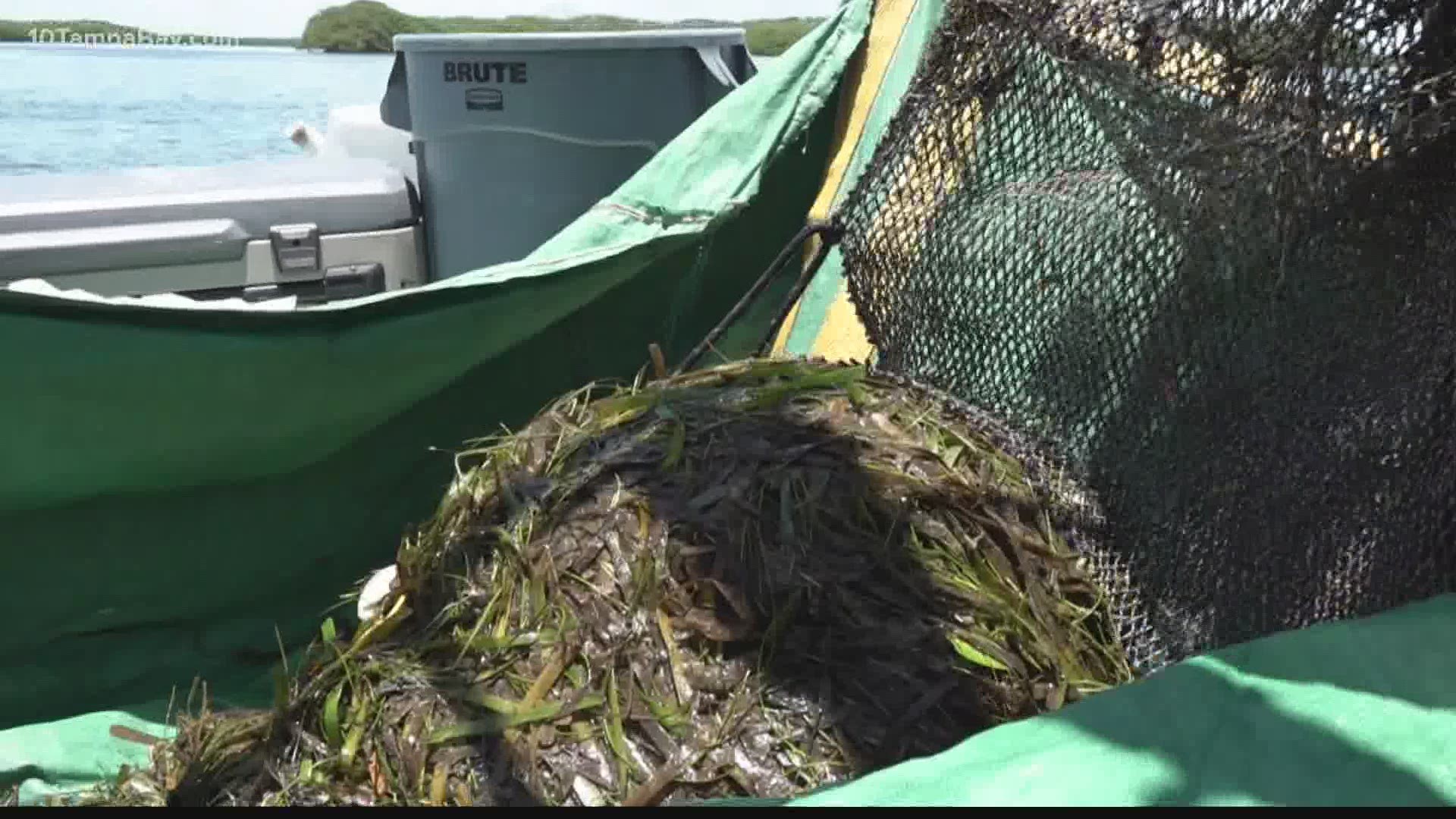ST. PETERSBURG, Fla. — The city of St. Petersburg has allocated roughly 200 employees to cleaning up dead sea life. Crews have been working every day for the past month to clear dead fish and other marine life from the waters.
This does not include county clean-up crews, contracted crews or other groups organizing clean-up efforts.
Because the city is pulling crews and teams from other areas in both Parks & Recreation and Public Works, the city of St. Petersburg said residents can anticipate seeing some impact in the following areas:
- Parkland Mowing reduced
- District Trash Clean-up Program reduced
- Equipment Shortage (Loaders & Dump Trucks)
- Equipment Operator Shortage
- Delayed Playground Replacement
- Delayed Parkland Construction Div. Projects (boardwalk & parking lot milling projects)
- We have pushed back quarterly annual landscape bed replacements at the Waterfront so staff can concentrate on daily clean-ups
- Natural & Cultural Div. has been reassigned to focus on waterfront area clean-ups
- Median care and clean up
- Lake weed and algae management
- Lake debris (aside from fish)
- Ditch maintenance
- Alley maintenance and repairs
- Street Sweeping
- Sidewalks
- Curb and gutter
- Striping
- Routine sign replacement
On a county level, Pinellas has contracted with DRC, an emergency services company, to remove dead marine life from the waters.
Clean-up crews have been out from sun up to sun down every day for more than three weeks.
Jay Gunter is a regional manager for DRC. He said this isn't the worst case of red tide he's seen in Pinellas County, but it has been the most difficult clean-up.
"Getting in the tight canals, around the rocks, especially in St Petersburg," Gunter said. "And the boats, lots of boats in there. it's definitely harder to collect than just trying to get them out of the ocean before they get to the shoreline."
Gunter said their work is done with help from the county, who scouts out fish kills from the skies above.
"The county is out in helicopters throughout the day," he said. "They're looking for piles and things and they'll send me pins."
Many of the crews removing dead marine life have other jobs. Christian Tucker has a family shrimping business, but with red tide so bad in the area, he's now fishing for carcasses.
"It's kinda sad, we live off this," Tucker said. "We shrimp most of the year and we deliver to bait shops so it provides for our families. Going through the crises we're going through now, with all our fish dying our Tampa bay area, it's slowing down the business not only for us but for tourists."
Tucker explained how the work he does comes at a cost. Red tide can cause respiratory problems, and handling dead fish can also cause rashes on the skin.
"Most of the time we're dealing with-- not severe sickness, but the smell, we all know causes a sickness, respiratory problems," Tucker said.
Just the nastiness, we break out with rashes, infections from this stuff."
Gunter said the clean-up efforts this year have been made more difficult by the weather.
"The winds are a huge impact," Gunter said. "While we are running two shrimp boats right now in the gulf, there is a lot of fish away from shore from 400-800 yards to even 3 miles offshore in the gulf."
- I'm vaccinated against COVID-19 but I tested positive for the virus. What now?
- Everything you need to know about Blue Origin's first human flight
- Tampa man faces 1st sentencing for felony in US Capitol riot
- Here's what to expect from the Buccaneers' visit to the White House
- 1,300 gallons of raw sewage discharged into St. Petersburg waters
- Tampa Bay Rays game will feature MLB's first all-female broadcast crew
- A Frank Conversation: New podcast explores race, religion, politics and more
►Breaking news and weather alerts: Get the free 10 Tampa Bay app
►Stay In the Know! Sign up now for the Brightside Blend Newsletter

